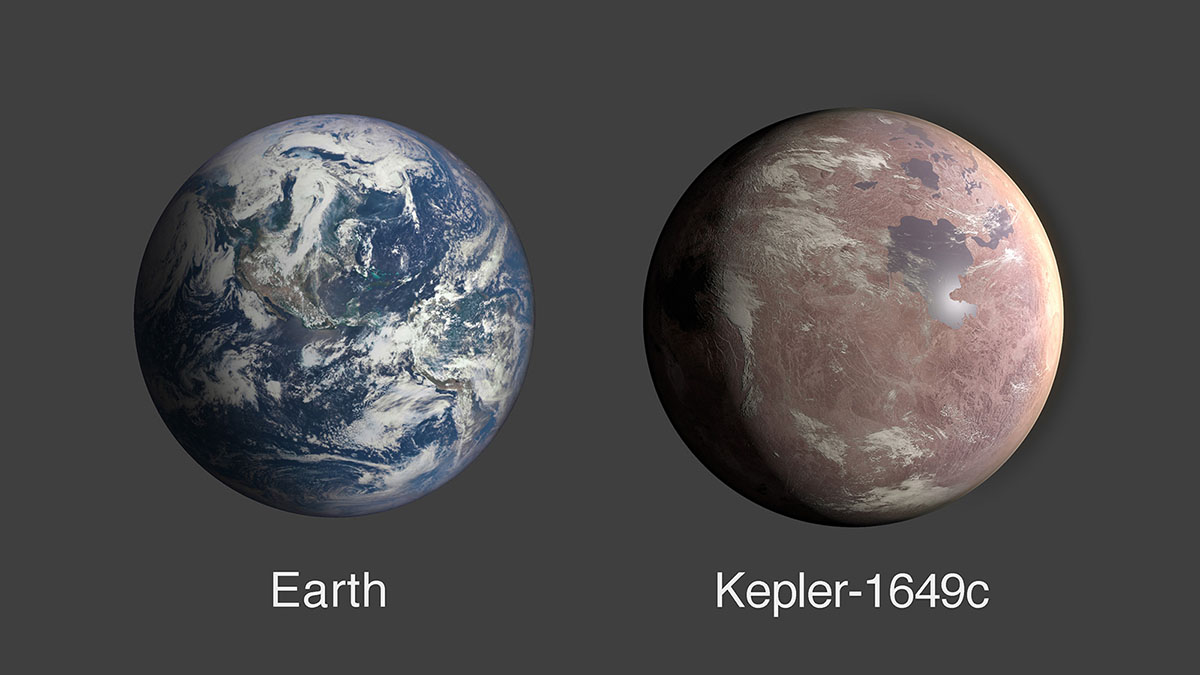This graphic compares the size of Earth and Kepler-1649c, an exoplanet only 1.06 times larger than Earth by radius. (NASA/Ames Research Center/Daniel Rutter)
Home This graphic compares the size of Earth and Kepler-1649c, an exoplanet only 1.06 times larger than Earth by radius. (NASA/Ames Research Center/Daniel Rutter) This graphic compares the size of Earth and Kepler-1649c, an exoplanet only 1.06 times larger than Earth by radius. (NASA/Ames Research Center/Daniel Rutter)



